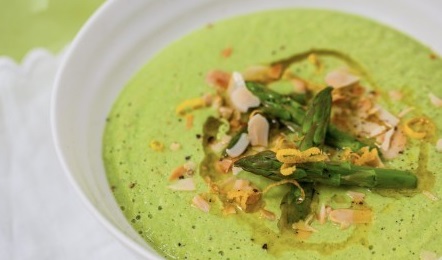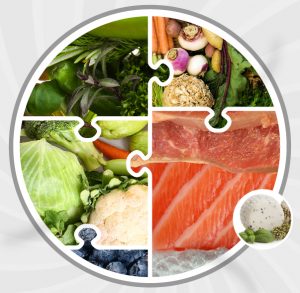December is a month that encompasses the Christian and Jewish celebrations of Festive Season and Hanukkah, and also includes spiritually significant days for Muslims, Buddhists, Pagans and Zoroastrians. Festivities and commemoration for each faith go on for varying lengths of time.
So how do we end up piling on the pounds over the festive season?
It’s normal to want to indulge over the Festive Season, but the number of people joining diet clubs and gyms in January speaks volumes about how many regret their festive binges.
Maybe you’ve grown up associating food with pleasure and fun, so subconsciously you fear that if you don’t eat tonnes, you won’t have a ‘happy Festive Season/happy Hanukkah’. It’s easy to slip into a ‘one more won’t hurt’ mind-set – just one of the many reasons you might have piled on the pounds during the festive period in the past.
When working with clients on weight loss programmes, I always like to get clear on what has held them back in the past. These are a few of the things that often come up
1. Portion control – have you ever felt you’ve waited all year for Festive Season/Hannukah, so you’re not about the hold back? The extra roasties or chocolates don’t seem to matter.
2. Social life – family gatherings, work lunches and endless parties mean that you are literally overloaded with temptation, sometimes on a daily basis. And hangovers add to the urge to eat junk food and veg out on the sofa
3. Sedentary lifestyle – a busy social life means exercise routines get put on the back burner as we swap dumbbells for the remote control. Swap that for a few brisk walks in the park or some gym time and you’ll have done the hard work of making a start come the New Year- starting is always the hardest bit
4. Mental ‘hall pass’ – willpower goes out the window at this time of year. It’s almost as if you tell yourself that it’s fine to binge on everything in sight as you’ll lose it all when you go on a January diet / detox- which often doesn’t ever start.
Guess what? You can still enjoy the festive season and not gain weight
The trick is to not feel left out by integrating treat foods into the context of an overall healthy diet. So one slice of cake/doughnut/biscuit treat, not four, in one afternoon. And as long as you have some strategies in place before the festive season, there’s no reason why you can’t start the New Year looking and feeling fantastic.
If you don’t have a plan (for parties, going out, visiting friends, having family over and so on) you are setting yourself up to fail. Be clear in your mind what your healthy options are, and if you know you’re going somewhere you won’t be able to eat the right foods, take some nutritious snacks or meals with you.
9 Tips To Avoid Gaining Weight Over The Festive Season
As a qualified BSc Nutritional Therapist, I work with clients to take control of their relationship with food and plan how to get through times when over-indulgence might feel hard to resist.
Here are my 9 tips for how to avoid gaining weight over The Festive Season, and still have fun:
1. SET A FESTIVE FOOD GOAL
It’s unrealistic to try and avoid all temptation over the Festive Season, but by setting a specific goal – say, limiting yourself to one treat a day, or scheduling in a quick workout once or twice a week to offset your increased calorie intake – will help you stay on track
2. HAVE PROTEIN
Fill up on some protein-rich food such as nuts, seeds or chicken before you hit the party circuit
3. PORTION CONTROL
Eating from a smaller dish causes you to eat less, because the food itself looks more substantial. If you transfer food from a 12-inch plate to a 9-inch plate, it looks like more food and you, therefore, feel more satisfied. And avoid seconds unless you are genuinely still hungry
4. AVOID EATING EXCESSIVE FAT
Research reveals that fat from certain foods, including ice cream and roast potatoes, goes straight to the brain and tells you to eat more! It triggers messages that are sent to the body’s cells, warning them to ignore appetite-suppressing hormones that regulate our weight.
The effect can last for a few days, sabotaging efforts to get back to a healthy diet afterwards. Dr Deborah Clegg, who conducted the research, explains: “Normally our body is primed to say when we’ve had enough, but that doesn’t always happen. When you eat something high in fat, your brain gets ‘hit’ with the fatty acids and you become resistant to insulin (which regulates blood sugar levels) and leptin (the hormone that suppresses hunger). Since you are not being told by the brain to stop eating, you overeat.
5. KEEP TREATS OUT OF SIGHT
If you want a Quality Street chocolate and all you have to do is reach to the tin and help yourself, chances are you’ll end up eating 3 or 4. But if you have to get your shoes on, walk to the shop in the cold to buy some chocolate, you probably wouldn’t bother.
Ever heard yourself say “take this away from me, so I stop eating?” With food directly in front of you, it’s easy to overindulge. Once it’s removed, you realise you aren’t even hungry – you were just eating because it was there. So keep unhealthy foods out of sight in cupboards- or better still, don’t buy them. If you know they’re in the house, you might not be able to resist
6. REMEMBER VEGETABLES
Veggies don’t need to be doused in oil and roasted to within an inch of their lives to taste good. Plus they can really fill you up in a healthy way.
One of my favourite festive side dishes are thinly sliced Brussels sprouts, steamed and then fried with garlic, pine nuts and a dash of white wine. It’s so tasty, I make it all year round. Slow-cooked red cabbage and apple is another fantastic way to get some much-needed nutrients
7. SLOW DOWN WHEN YOU EAT
It takes around 20 minutes for your body to tell your brain that you’re full. If you eat quickly, you’re more likely to overeat. Slowing down gives you time to recognise and assess how hungry you really are.
One trick I use is counting chews (it’s tedious but, believe me, it works). If you chew a bite 10 times, you’ll eat slower. I also found myself enjoying food more, as there’s more time to actually taste what I’m eating. Eventually it becomes second nature to chew more
9. 8. CIRCLE OF SUPPORT
Emotional support is crucial when it comes to dieting. Research shows that people who felt supported by their friends and family were 50% more likely to stick to a healthy eating plan. So ask your loved ones to help you avoid temptation by not to offering you sugary treats. Buddy up with a family member who is also trying to lose or maintain their weight. Having that moral support will boost your chances of success (and you won’t be riddled with that horrible feeling of regret the next day)
9. BE KIND TO YOURSELF
If you slip up, don’t beat yourself up or see it as an excuse to write off the rest of the day and eat everything in sight. Just leave it in the past- don’t ruminate about it, and move on.
If you’re resigned to Festive Season weight gain and are promising yourself you’ll do something about it in the New Year, why not make a commitment to your future self by booking a FREE call with me to see what the options are. I offer a range of health and weight loss packages that can help you reach your personal health goals. You’ll be surprised how easy it can be to get to (and stay at) your happy weight.
M: 07812163324 Email: info@yournutritionalhealth.co.uk
Yours in health
Sylvia
Sylvia Salvendy
Nutritional Therapist, Health Coach & EFT Practitioner
BSc Nutritional Therapy, Dip BCNH, CNHC, mBANT
Accredited Certified EFT Practitioner AAMET
Zest4Life Health Coach



